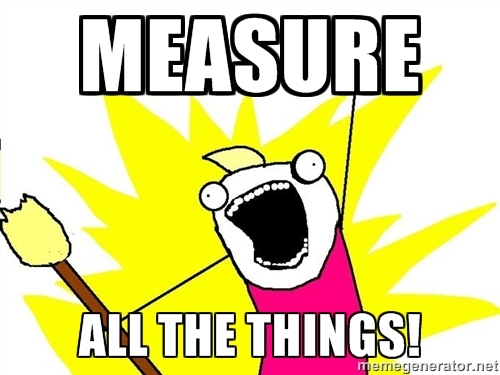As content marketers, we want to measure all of the things. We want predictive models for the future and historical data as far back as possible. We want numbers and we want them now.
But what we need is a reality check.
You cannot efficiently look at everything out there—nor should you. Turns out, every metric out there isn’t relevant to your business’ bottom line. The real magic happens when you focus on information that tells a story—the data that explains how your content is performing and provides actionable insights for enhancing your content marketing strategy.
If you and your team are approaching your collected data armed with the right questions, those data sets become far more powerful. When breaking down the 3 steps to achieving a competitive advantage from data, Michael Brenner’s top suggestion is to “identify business outcomes that can be influenced by data.”
Here’s a look at how Virgin to do exactly that, using data to plan content around their business objectives.
Virgin Digs into Their Data
Even the largest organizations with the biggest data sets can take all of the information available to them and systematically narrow down it down to actionable insights. Take, for example, Richard Branson’s mega-brand Virgin.
They were faced with having a variety of verticals under one recognizable brand name, but users were having an inconsistent experience depending on which part of the site a customer was visiting.
In a great article, David Moth, Deputy Editor at Econsultancy, reported on how Virgin solved this problem with a two-phase approach.
When I dug into the article, I found the key questions that arose within these two phases incredibly illuminating—questions every marketer should ask while building out their content marketing operation.
So to get the most out of your data, set aside time before your next content planning meeting to ask the following questions about your content, and to see how the answers validate or shift your current strategy.
Phase 1: Get to Know Your Current Audience
Moth describes using data to understand the people consuming Virgin’s content as “creating an interest graph.” Then, they looked at which conversations were resonating with the audience. The purpose of this phase was to evaluate the current state of content consumption, understand what types of information and topics people are looking for (and find), and how the audience feels about that content.
Questions to Ask:
- What are people searching for on search engines and social media?
- What views are they expressing about these topics when they find content about them?
- Which types of conversations are driving traffic and subsequent conversations?
- What qualities do these conversations have in regards to tone, sentiment, and the general feeling towards the brand?
This phase of the research resulted in the conclusions that Virgin.com should be organized more around social media, geared towards topics of entrepreneurship, music, and sustainability, Moth reports. They also learned that space travel and normal (terrestrial) travel would be good secondary content strategies for buzz generation and engagement.
Phase 2: Strategizing Around Target Audiences
The second phase of this process was to identify and then create a plan for reaching strategic audiences for the Virgin brand.
Questions to Ask:
- What are the target markets and demographics that are driving our business?
- Have we created personas representing them and their buying stages?
- How are each of these audiences unique, particularly when it comes to content topics and their content consumption and engagement behaviors?
- Who are the leading influencers for each of these groups?
Virgin discovered their most important target markets were entrepreneurs, music lovers, and travel enthusiasts, and built focused strategies for reaching each of them.
Result
By identifying the target groups they wanted to engage on their site, Virgin also figured out what types of content would provide the highest levels of conversation and engagement within those personas. With these key factors settled based on the analysis of their site data, Virgin established a unified content strategy that would solidify the look, feel, and overall brand of the entire site, regardless of which part of it a visitor lands on.
Whether your organization has already picked the right content metrics to measure from the start of their content marketing strategy creation, or if the data set is so huge that it’s intimidating to even begin analyzing, go into analysis mode knowing exactly what questions you want to ask and insights will start to appear.
You might discover that you’re doing something right, or you might need a change of heart in your core content focus. When these decisions are driven by data, you’ll be able to justify or change your content marketing strategy with the support of valid information and hard metrics.


